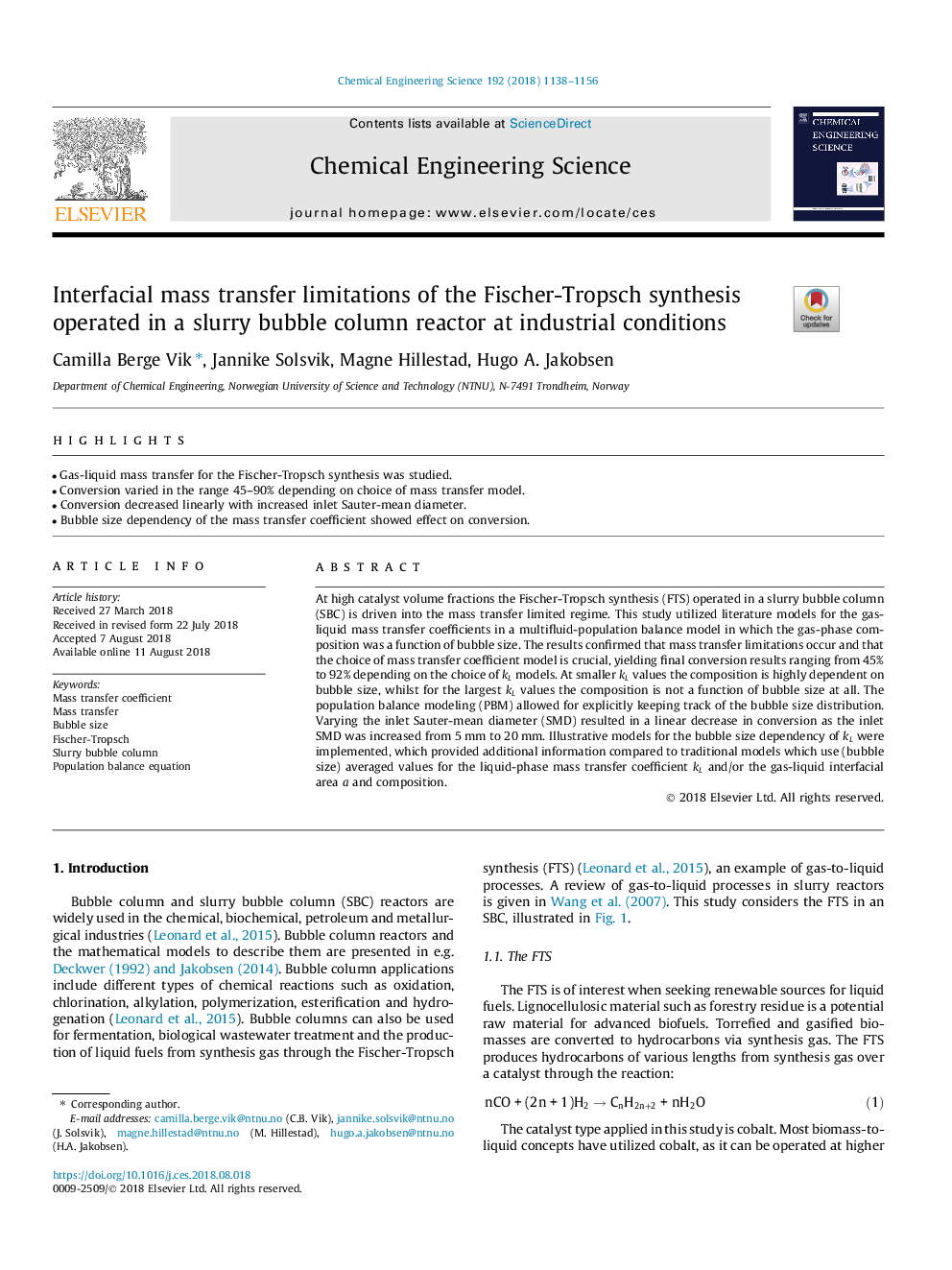| Article ID | Journal | Published Year | Pages | File Type |
|---|---|---|---|---|
| 11000284 | Chemical Engineering Science | 2018 | 19 Pages |
Abstract
At high catalyst volume fractions the Fischer-Tropsch synthesis (FTS) operated in a slurry bubble column (SBC) is driven into the mass transfer limited regime. This study utilized literature models for the gas-liquid mass transfer coefficients in a multifluid-population balance model in which the gas-phase composition was a function of bubble size. The results confirmed that mass transfer limitations occur and that the choice of mass transfer coefficient model is crucial, yielding final conversion results ranging from 45% to 92% depending on the choice of kL models. At smaller kL values the composition is highly dependent on bubble size, whilst for the largest kL values the composition is not a function of bubble size at all. The population balance modeling (PBM) allowed for explicitly keeping track of the bubble size distribution. Varying the inlet Sauter-mean diameter (SMD) resulted in a linear decrease in conversion as the inlet SMD was increased from 5â¯mm to 20â¯mm. Illustrative models for the bubble size dependency of kL were implemented, which provided additional information compared to traditional models which use (bubble size) averaged values for the liquid-phase mass transfer coefficient kL and/or the gas-liquid interfacial area a and composition.
Keywords
Related Topics
Physical Sciences and Engineering
Chemical Engineering
Chemical Engineering (General)
Authors
Camilla Berge Vik, Jannike Solsvik, Magne Hillestad, Hugo A. Jakobsen,
